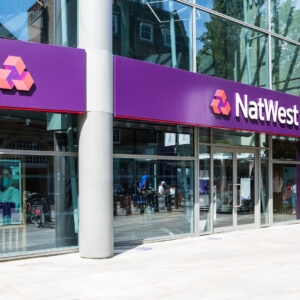During the pandemic, businesses shifted from bricks to clicks – that is, they shifted operations online. Unfortunately, for some companies, this was not enough to secure their future, and many went under.
It was a wake-up call. Businesses realised they would need to evolve to be ready and resilient if and when another significant global disruption were to strike.
Today, businesses are looking at the experience of Covid-19 and taking up the challenge of future-proofing as an ongoing goal. But they also face new threats – soaring inflation and the prospect of recession.
In July, Helen Dickinson, CEO of the British Retail Consortium (BRC), said: “As inflation reaches new heights, retailers are doing all they can to absorb as much of these rising costs as possible and to look for efficiencies in their businesses and supply chain.”
Higher fees
One way for businesses to future-proof is to reduce the overall cost of their proposition.
Payments are an obvious place to start because payment methods, like PayPal and cards, can be quite expensive — and continue to increase their costs to merchants.
According to the annual BRC Payments Survey 2021, retailers incurred costs of £1.3 billion to accept payments from customers in 2020. It reported that Debit cards, which accounted for 54% of all transactions, saw transaction fees rise by 22%.
After both Visa and Mastercard decided to increase cross-border interchange fees on purchases made by UK consumers to European businesses last year, the UK’s Payment Systems Regulator announced its plans to initiate two market reviews into card fees.
It aims to understand “whether the markets in connection with scheme and processing fees are working well”.
But it is not just Visa and Mastercard that are at it – last year, digital wallet PayPal introduced fees on transactions between the UK and Europe.
Race to reduce costs
However, it is not all doom and gloom.
Cost-effective alternatives to cards and wallets can offer the same, or better reach, and the same, or better, conversion rates — and significantly lower costs. And that’s Open Banking payments.
Let’s face it: in the current economic climate, any approach or technology that can save a business money is a no-brainer.

Token’s Michael Lane
Merchants are racing to cut payment costs right now. They’re starting to look around and ask: How can I accept account-to-account (A2A) payments? Through my payment gateway? Do I speak to my bank?
I can tell you, merchants are doing all of those things, and because of surging interest from merchants, payment gateways are now asking how they can bring Open Banking payment propositions to life quickly and efficiently.
Routes to take
Launching an A2A payment proposition is not without its hurdles, though, given there are a number of ways in which to do it.
First, a business can build their own from scratch. That might be feasible if a business wants to serve a single country and connect to the top three banks in that country. But in reality, that would be a very restrictive alternative payment method.
The second option is to go to a company that will put their logo on your checkout, but quite often this adds confusion, and can make a checkout look too busy.
A crowded checkout is never good for conversion.
But I don’t think Open Banking should work like that – it must be both visible and invisible.
That brings me to the third option: The gateway works with a company that can offer a white-labelled Open Banking payments proposition.
Businesses can add a single button to their checkout for Open Banking payments, which can either be a generic ‘Pay by Bank” button, or branded in another fashion by the gateway itself.
Taking this approach allows a merchant’s customers to go through a user experience they know and trust, delivering a conversion rate of upwards of 99.7% in some geographies, at a significantly lower cost than traditional cards or well-known wallets.
On the right track
At Token, our modelling shows this third option — a white-labelled proposition — is not only the simplest route, but the best way for gateways to generate the greatest revenues and highest margins with Open Banking payments.
PSPs are traditionally payment method aggregators. This started with card acquirers, and then a plethora of APMs.
A white-labelled, generic Pay by Bank proposition is open and inclusive, earns more for PSPs than APMs – which pay notoriously little back to the gateway – and delivers the benefits that merchants are increasingly demanding in our current economic climate. Those are lower costs, instant settlement to improve cash flow, and exceptional reach and conversions.
In the present economy, merchants face a race to lower costs. While PSPs face a different race: one to satisfy merchants’ needs, while continuing to grow their own revenue.
Certainly, there are different tracks to get to the finish line, but it is becoming clear one track is shorter and has fewer hurdles than the rest.
Written by Michael Lane, VP sales at Token









